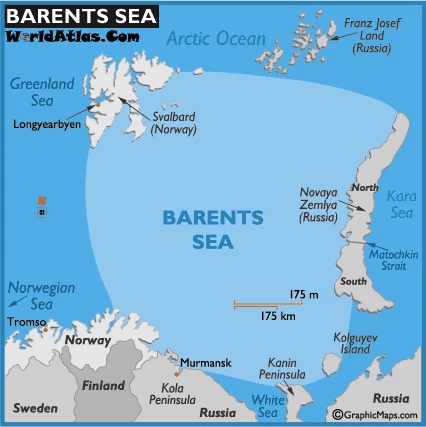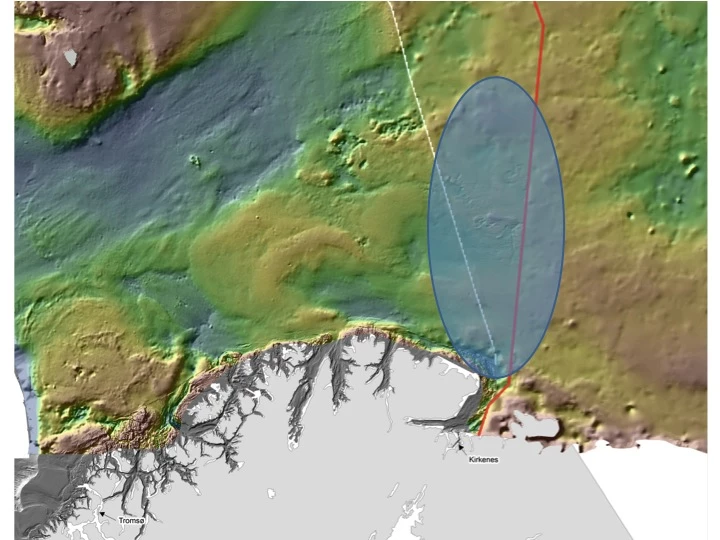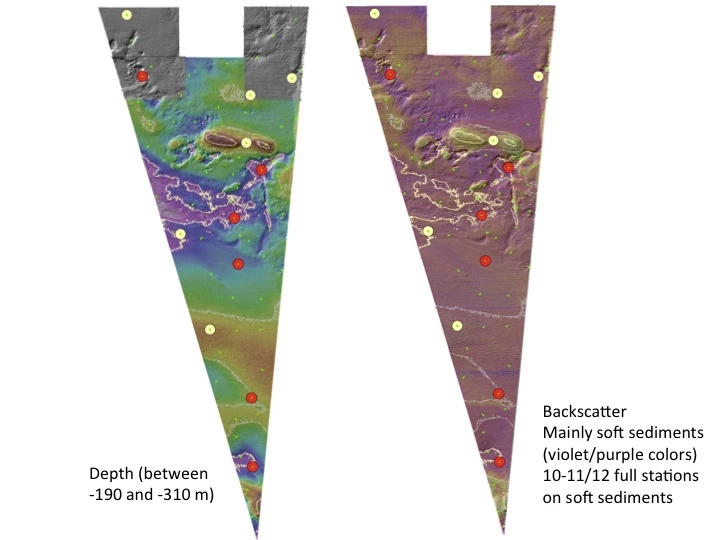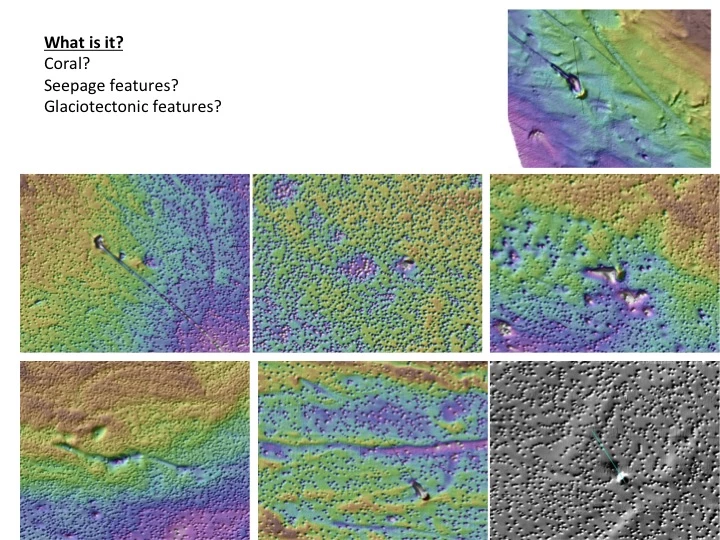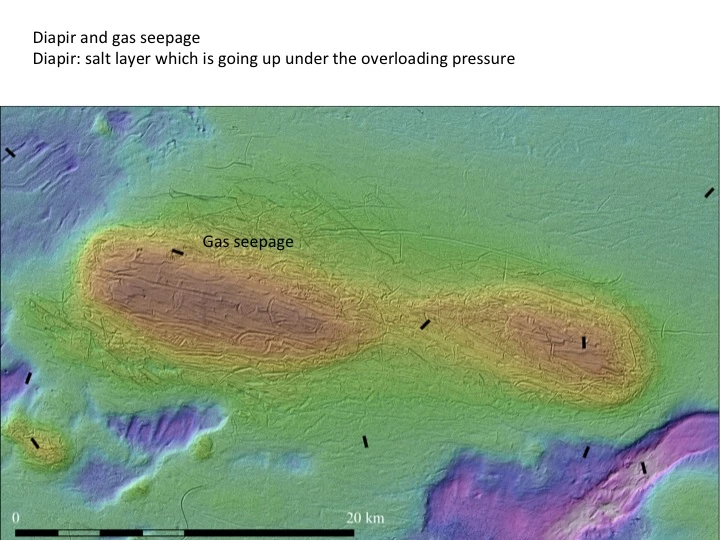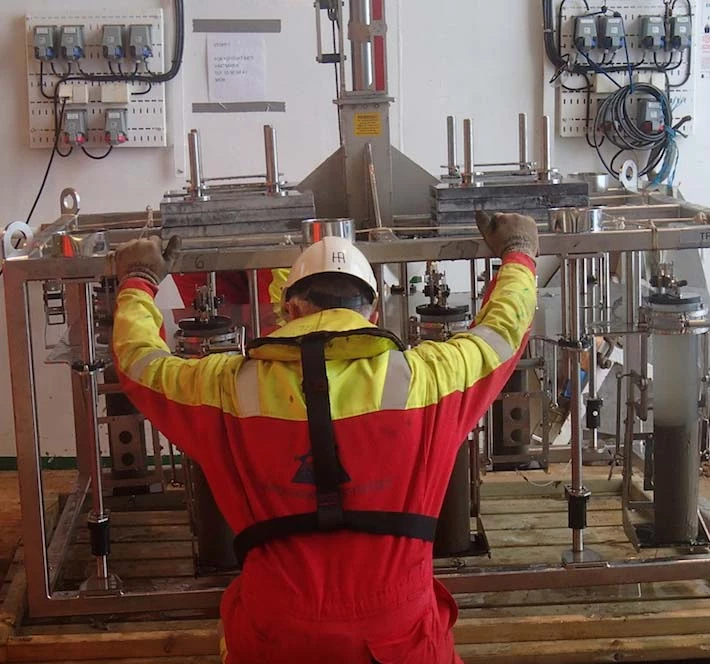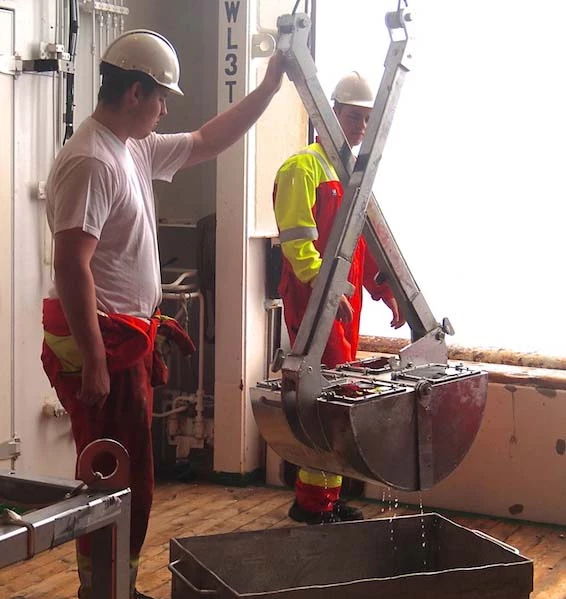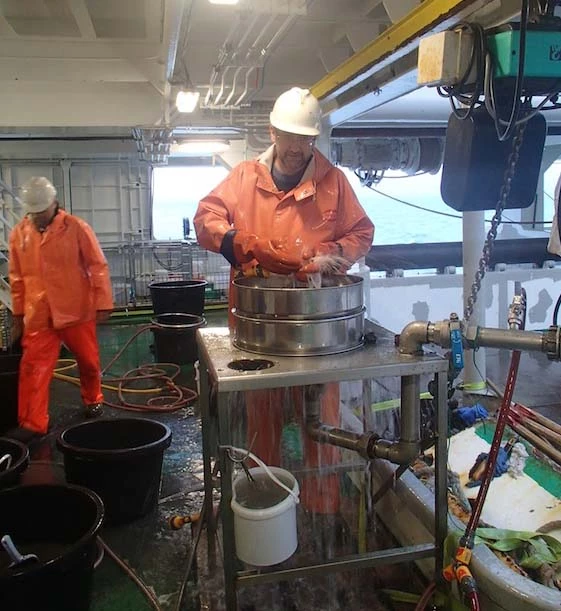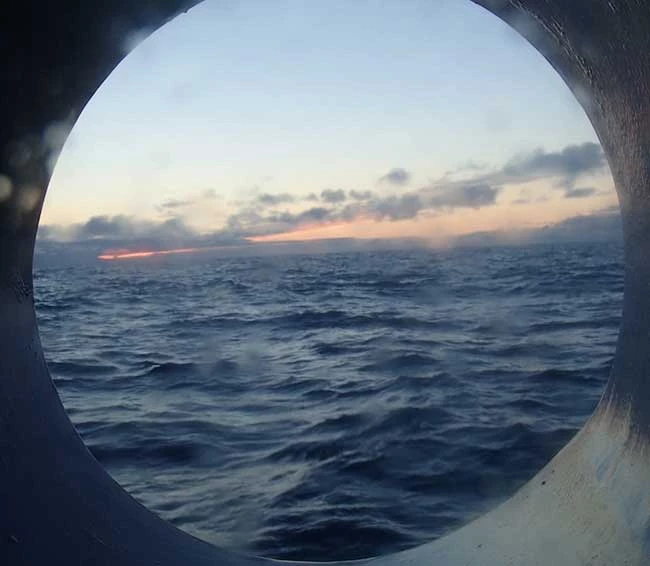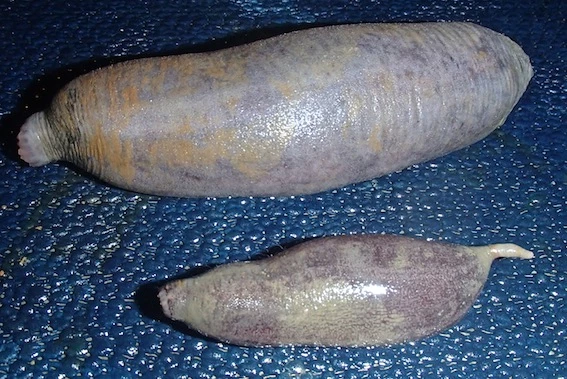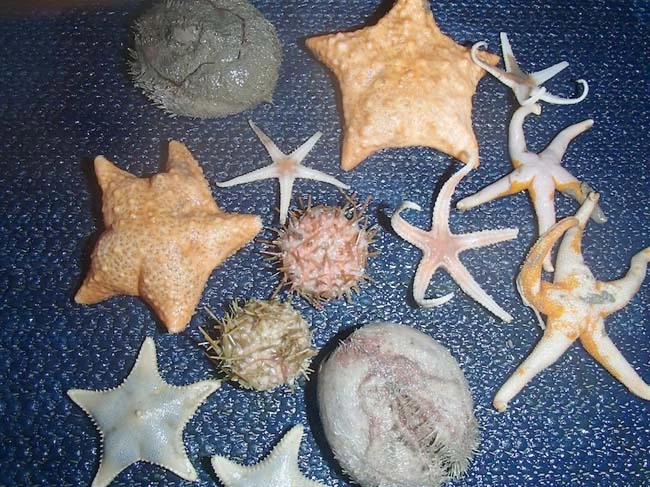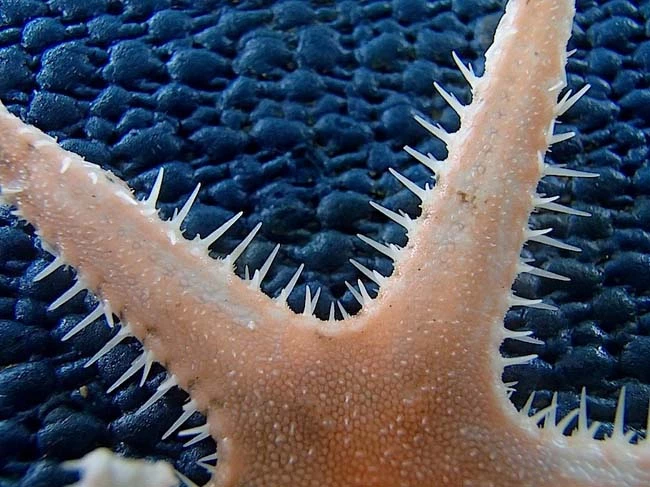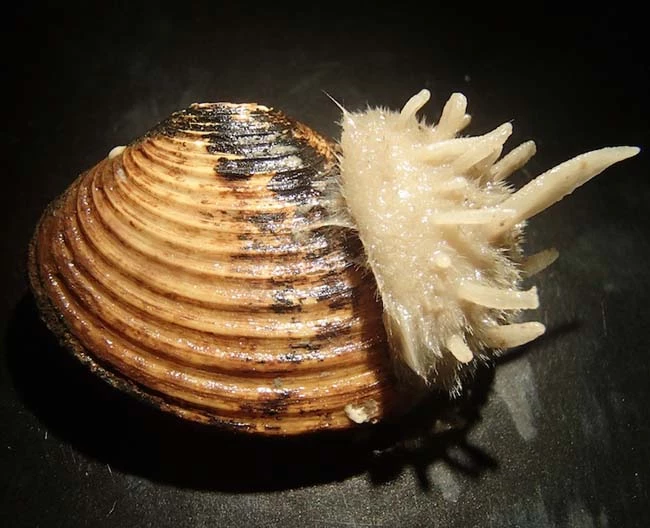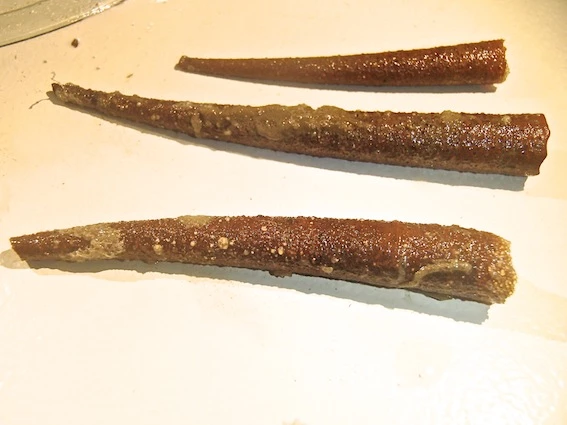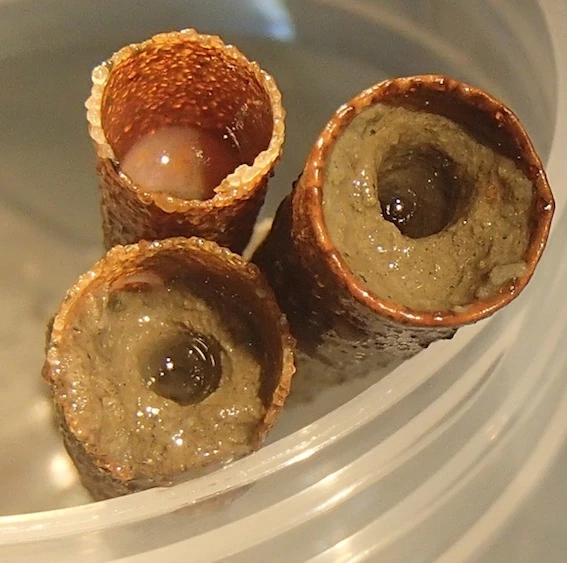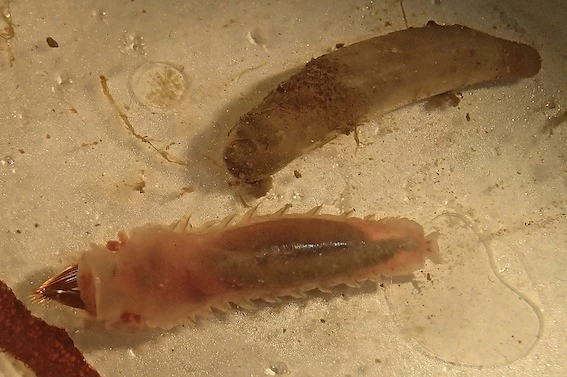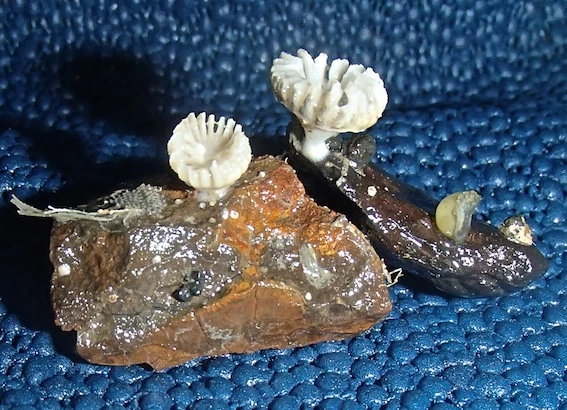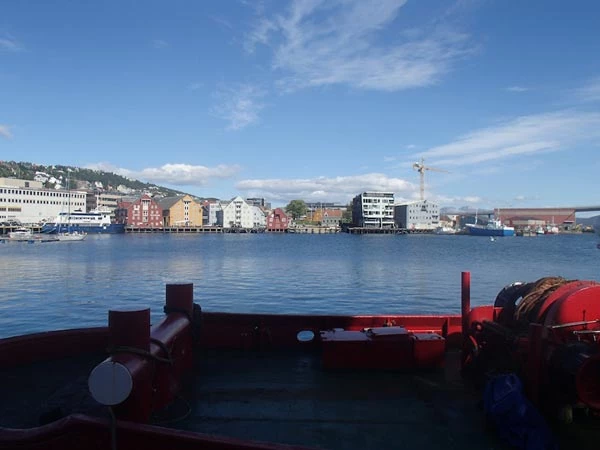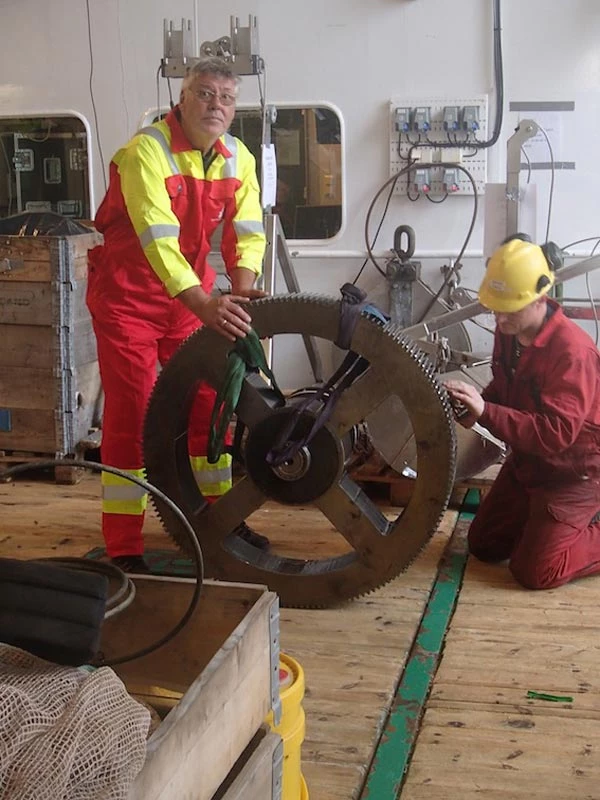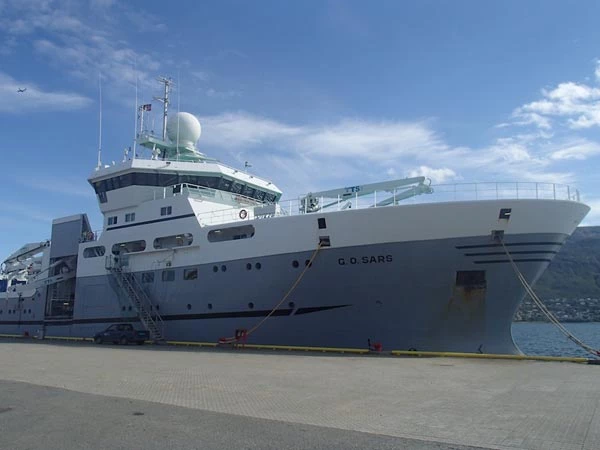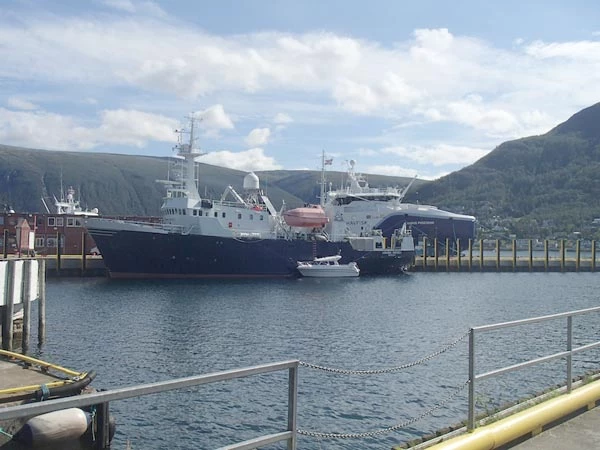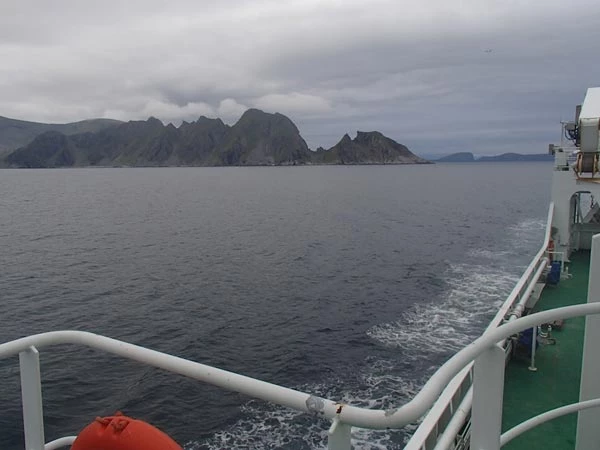Barents 4 : The Sea of Mud
, 20 August 2013
You have not heard from me for a while because there has been little to report in the way of spectacular finds. The Barents Sea, at least the sector we are in, is a plain of muddy sediments at depths of 210 to 350 metres. That is not say that there is no life down there most of it is hidden in the mud and most are rather small and beyond the ability of my camera.
I thought that I should review where and what has been going on. Two images to remind you of where we are [1, 2]; in the second the oval area is the study area. The coloured images show the water depths from brown-yellow-green-blue from shallow to deep. Geologists also survey the area using a type of penetrating sonar that gives a picture of the structures in the seabed. This data is combined with the bathymetry and using this the geologists and biologists decide where to make their investigations [3] .
Two interesting features on the these images [4] : - first the long groove (top and middle left) is the trough made by a massive iceberg grinding into the seafloor probably not long after the end of the last ice age; secondly (middle and bottom rows) all the dots represent pock-marks made by methane gas flowing out through the mud and leaving a depression. It is thought the gas was trapped by the pressure of the ice during the ice age and when the ice retreated this gas was released all over the Barents Sea.
The animals that I am interested in often live around pockmarks but unfortunately most are now inactive. We did visit an area where active gas seepage has been found but we found no specialised fauna from our sampling. This area consists of two mounds [5] created by the slow upward movement of salt layers deep in the underlying rocks, called salt diapirs [6] these sites are often associated with gas seepage and unusual faunas.
Many thanks to Valerié Bellec for the multibeam images.
Having set the sampling grid the geologists using the multicorer [7, 8] take sediment samples and these are also used by a geochemist that looks for contaminants such as heavy metals. Here [9] Stepan (geochemist) washes down the tubes while in the background Sigrid and Valerie discuss what to do next.
You have already seen the video (CAMPOD) and beam trawl in action but the bulk of the quantitative data is gathered by the grab [10] . Andrey washes out the sediment through a 1 mm mesh in the auto-siever [11]; all animals are kept to be counted and identified later back at base.
All this data is combined in a GIS (geographical information system) system and maps of the seabed produced. These maps can show bathymetry, sediments, and geochemistry but here is one for the area off Tromsø showing a combination of sediments and faunas [12] . The faunas are recognised by the dominant species seen by the video combined with data from the trawl and grab. These maps are interactive and can be viewed on the MAREANO web site.
The MAREANO project is very ambitious but it will provide both scientists and decision makers with the information needed to manage the Norwegian Seas. The Barents Sea data will help decide how to manage the cod fishery and the coming oil exploration.
Finally its midnight through my porthole [13]
